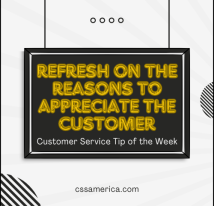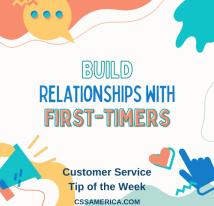
Have you ever seen the TV show “Monk?” It’s about a former police detective now turned police consultant. He has a “unique” personality due to too many different life experiences to go into at this point, but let’s just say he’s not the most touchy/feely person in the world.
Every episode includes his sessions with his psychiatrist where he shares his feelings in his own “Monk way.” Sharing feelings is not natural for Monk, and he has a hard time caring about or being curious about others’ feelings as well. At least in this respect, many of us are similar to Monk.
However in customer service – especially in many of the most difficult conversations we have – emotions are involved. And if you’re like Monk, or if you have trouble sharing your own feelings with others in a personal setting (let alone a work setting), you might work hard NOT to have to have a discussion of feelings. But unfortunately for those of us not on the touchy/feely side, we have to allow those emotions to come from the customer.
When the customer is upset, angry, frustrated, or they’re envious or hurt or anxious, we cannot ignore those emotions. In order to get to a resolution in such a way as to engender trust and to have the customer feeling good about how the conversation went (even if they didn’t love the outcome), we have to let them share those emotions.
People can bring down the emotions if they are allowed to flow; they can settle down quicker if we allow them to relieve the pressure. They can think more clearly and logically and move on if they’ve been allowed to vent. Oftentimes, they don’t even want a resolution if we just give them the opportunity to share the emotions.
Now I’m NOT suggesting you ENCOURAGE them to share, but be observant of emotions. If they exist, allow them to flow, don’t interrupt, don’t argue – instead, listen and empathize, and then find the opportunity to start asking questions that move you toward solutions.
To get to the next step, to deal with someone on more sensible terms, be sensitive to their emotions.
Let them share.























